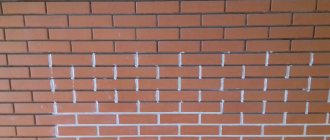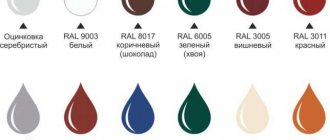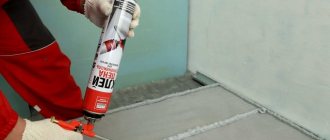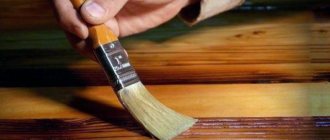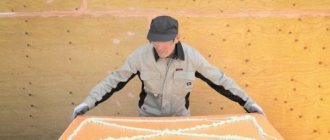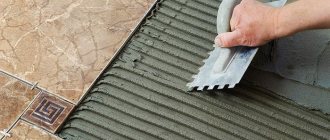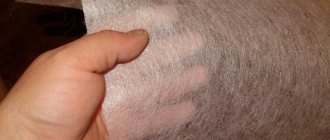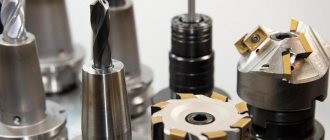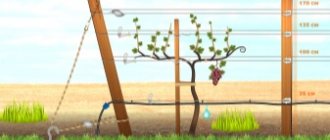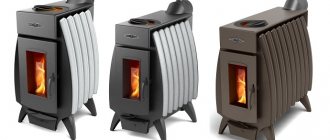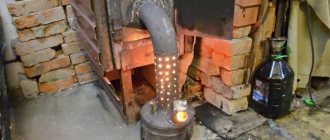Definition of Heat Resistant Adhesive
As the name suggests, the product must withstand high temperatures.
Such adhesives are made based on epoxy resin and various additional components: plasticizers, setting time regulators, modifiers, sulfur and others.
They produce both ready-made and powder heat-resistant compositions containing epoxy and metal chips or other mineral additives.
Heat-resistant compounds are used as tile adhesives, as well as for bonding glass, tile, wood, metal or plastic surfaces.
There are also universal products; they are convenient because they can be used on all surfaces of fireplaces, as they have high decorative qualities.
Technology of use
It is necessary to clean the workplace and protect it from accidental contact with glue. Next, carefully place the tool on the stand and insert glue for the hot-melt gun. Heating time depends on the device (2–6 minutes). You can start using hot glue when a drop of glue appears on the tip of the hot glue gun.
The rod must be inserted all the way.
The surfaces on which the glue will be applied must be clean. To dispense glue, you simply pull the trigger. The amount of glue stick depends on the pressure applied and the feed speed. The surfaces are connected and held for a few seconds to allow the substance to harden.
To change the spent rod, you need to press the trigger a little and insert the new one close to the old one. If you need to change the color refill, you must first remove the old one. A new rod is inserted into the hot gun. To remove the remnants of the previous color, you need to pull the trigger several times until the desired color appears.
Where are heat-resistant adhesives used?
In a wide range of different products for furnace work, you can find glue for working with any material and for use in any conditions.
Heat-resistant adhesives are used on heated surfaces, as well as on plastic, ceramic, metal, graphite, rubber and other substrates.
They earned their popularity partly due to technological stability.
Even a beginner can perform work using such products without mastering professional application techniques.
Today's heat-resistant adhesives don't require mixing like clay to ensure there are no lumps. Fireproof heat-resistant compounds can be used for laying the entire structure.
Heat-resistant adhesives can be used for cladding and decorating fireplaces, muffle and fire furnaces, and forges. Heat-resistant compounds work equally well on horizontal and vertical bases.
There are environmentally friendly and safe products that are allowed to be used for gluing dishes. Heat-resistant adhesives are suitable for repairing ovens, heating units, kitchen hobs and sealing cords.
Spectrum of action
So, by heat-resistant glue we mean a thickened paste , which simplifies the process of application to the required area. As for the range of actions, it is so wide that it makes heat-resistant glue a universal base . It is used to work with graphite, metals, plastics, and so on . On the positive side, the glue has proven itself when gluing glass and ceramics. Based on these data, the conclusion suggests itself that this type of glue is used in many industries.
Variety of adhesives
Adhesives are used and work in a wide range of temperatures. There are compositions for various temperature conditions
- Heat-resistant compounds will withstand temperatures ranging from -30 to +300 degrees
- heat-resistant adhesive will withstand exposure from +140 degrees
- The fire-resistant product will last 180 minutes without loss of quality and without chemical interaction with fuel particles of the flame.
- fireproof material can come into contact with fire without time restrictions
- heat-resistant (heat-resistant, heat-resistant) glue can heat up to +1000 degrees
Mineral substances that have the highest heat resistance - a cement-clay base with the addition of fireclay fiber and sand as a plasticizer - are used for brickwork in kilns. Withstands heating up to +1200 degrees.
The disadvantage is the low quality of the clutch. Plus - inexpensive aluminosilicate cement and kaolin with additives from quartz sand and liquid glass provide heat resistance at temperatures up to +1360 degrees.
Adhesion indicators are better than those of cement-clay bases, but the composition is not particularly plastic.
Used for finishing tiles and porcelain stoneware on fireplaces and stoves, aluminosilicate cement with potting stone (soapstone flour) is quite an expensive product, but this is justified by the high quality of adhesive joints, high adhesion rates and resistance to temperatures up to +1500 degrees.
The composition is capable of converting short-wave and, as a result, hard thermal radiation into soft long-wave radiation. It interacts well with any materials in finishing and stove work.
Quality criteria for heat-resistant adhesives
- resistance to high temperature heating
- resistance to sudden drops in temperature (special adhesives must be frost-resistant)
- moisture resistance - the adhesive joint should work even at high humidity and should not be damaged by contact with water
- gas tightness
- ability to form an elastic, durable and wear-resistant seam
- heat exchange
- environmental friendliness
- safety
There is another important indicator - the coefficient of thermal expansion of the adhesive joint after polymerization. It should be opposite to the same parameter of the base material.
It is impossible for these criteria to coincide, since the adhesive joint must be plastic at any thickness. To avoid unpleasant surprises, manufacturers indicate on the packaging recommendations for use with certain materials.
The finishing adhesive must have optimal viscosity. If it is too high, he will not be able to firmly attach the facing material to a vertical or highly sloping surface.
Glue that is too liquid and sticky will simply drain from the surface along with the finish.
Vinyl siding colors
To make it easier to choose colors, they were divided into subgroups: shades of white, colored and pastel tones. The latter are the most popular because they are cheaper and do not become boring over time. The low price is due to the small amount of additives needed to maintain color intensity for a long time and prevent it from fading.
White and bright colored panels are most often used to design decorative elements and edgings. They will highlight the main pastel shade.
Basement siding is an exception. Models with imitation brick and natural materials are used here. They can have beige, gray, sand or terracotta shades. It is better to combine them with wall panels of natural colors so that the exterior of the house is logical and complete.
However, sometimes there are original solutions, for example, when the facade is completely covered with siding with imitation brick.
If you decide to purchase a block house, pay attention to natural motifs: pistachio, cream, B and banana. Panels of this color should be combined with the roof of the house - if it is a similar shade, then the building will look faded
How to combine colors correctly
In order not to make a mistake, you need to know the basic laws of color combinations. The win-win options here would be
beige and brown shades,
- sand and plum,
- cream and terracotta,
- pale yellow and burgundy.
If you're feeling confident, you can experiment with bolder combinations like tones of orange, purple and blue. Do not treat these recommendations as an immutable truth - the color scheme should, first of all, please you.
Pros and cons of heat-resistant products
The clear advantages of these heat-resistant adhesives include
- the opportunity to purchase glue at any construction or household goods store at a low price
- quick drying (for some products) - from half an hour
- no special equipment required
- no special knowledge or skills required
- no need to completely dismantle the structure
- there is no need to level or otherwise process the seam - the mixture is distributed independently
- You can combine materials of homogeneous and different structures
How to properly connect metal surfaces
It is not uncommon for there to be a need to glue two metal parts together, even at home.
Before you begin this work, it makes sense to go to your nearest hardware store and ask for the so-called cold welding.
The procedure for cold welding looks something like this:
- First, you need to prepare the surfaces.
- Secondly, remove traces of corrosion from parts.
- Thirdly, mix the cold welding components together. Many manufacturers supply this glue in the form of a filled tube, where the outer layer is one component and the inner layer is another.
- Fourthly, they must be mixed until a homogeneous mass is obtained. By the way, when mixing, chemical reactions can occur, releasing a small amount of heat.
- Fifthly, the resulting mass must be applied to the prepared surfaces.
- Sixth, metal parts must be squeezed together or placed under a load.
Gluing metal parts
Depending on the type of cold welding, the curing time may vary.
The disadvantages include
- high cost of the product and, as a result, an increase in the budget for repairs
- To carry out major repairs, sometimes you will have to use electric arc welding, since glue is not always able to cope with large-scale damage
- inconvenience when working with large surfaces
- high demands on the substrate surface (cleaning, drying, structure)
- You need to work quickly - due to the speed at which the glue thickens, you may not have time to correct the position of an incorrectly placed part.
Classification of heat-resistant adhesive compositions
Products designed to work with heated surfaces are conventionally divided into several categories.
The first is adhesives that can withstand heat up to 1000 degrees Celsius. They are used for cladding work on stoves, fireplaces, cooking and heating appliances.
The second group is products that are used in “warm floor” systems. They can withstand temperatures up to +140 degrees.
The third group includes small packages of transparent or matte adhesives that are used to repair heating products in everyday life.
The basis of these products are resins. The origin of heat-resistant adhesives can be either natural or synthetic, but often these are mixed compositions, including substances to impart strength, elasticity and protection from moisture and frost - plasticizers.
Adhesives are produced in the form of ready-to-use gels, mastics, putty-like materials and in the form of powder mixtures, which are diluted according to the instructions.
Characteristics of hot-melt adhesive rods
As already mentioned, the release form in the form of hot-melt adhesive rods is the most common due, first of all, to ease of use in conjunction with hot-melt guns of both professional and household class.
There are rods on the market with various properties and characteristics, which are usually indicated on the packaging.
Purpose
Hot-melt adhesive in rods differs primarily in color, which usually indicates its purpose.
However, it should be noted in advance that although there is a clear unification here, not every manufacturer adheres to it, which should be kept in mind when choosing these consumables.
Usually available to the buyer:
- White translucent rods are universal, used both in industry and for domestic needs.
- Opaque colored rods are similar to the previous option, but the only difference is that their color performs a camouflage or decorative function. They are mainly used for gluing colored objects.
- Opaque white rods - have different purposes, depending on the manufacturer and composition. Some can only glue glass, while others are a universal option for connecting white objects (similar to the previous point).
- Transparent yellow rods - have a universal composition, which is mainly intended for gluing wooden, cardboard and paper products. There are opaque yellow sticks, with which they should not be confused, again, by analogy with the second point.
- Gray or black rods are elastic sealants designed to insulate electrical conductors and seal seams, therefore they are not directly related to hot-melt adhesives as such.
Attention!
The actual purpose of the glue stick may differ from the list above, it all depends on the manufacturer, and therefore this list should not be taken as a selection guide.
Material
Hot-melt adhesive rods are most often produced on the basis of ethylene vinyl acetate, due to which they have a low melting point, which was already noted earlier, and therefore it is possible to use them in conjunction with low-power glue guns.
There is also a relatively low cost.
The base can also be polyamide or modified silicone.
The latter is well suited for working with fabrics.
Dimensions and weight of hot melt glue sticks
The diameter of the produced glue sticks can be 7 – 12 mm.
The most popular sticks are 7 and 11 mm. The length of such glue sticks reaches 100 – 300 mm.
A package of 6 – 10 rods weighs about 50 – 150 g.
Adhesive for working with metals and alloys
Structures with metal elements that are subject to heating during operation require the use of special adhesives.
The temperature they can withstand starts at +370 degrees. They are applied both by spot and continuous method.
Adhesive compositions for metals and alloys are suitable for laying tiles in saunas, heated floors, and bathhouses.
Heat-resistant glass products
Used for repairing home appliances with glass elements and heating appliances.
Resistance to high temperatures is provided by the organic compounds present in the composition. Adhesive products for glass surfaces have a transparent structure.
Furnace glue
Special heat-resistant compounds were able to become a high-quality replacement for the clay traditionally used in furnace work. They provide deeper adhesion of materials and do not require dirty preparatory work.
In combination with silicone sealants, they strengthen the masonry and increase its gas tightness and provide protection against deformation under the influence of elevated temperatures.
Silicone sealants
Liquid silicone rubbers, commonly known as silicone sealants, are one-component or two-component substances for the most effective protection of seams, cracks and joints.
Compared to other types of sealants, silicone ones have a number of advantages:
- Resistance to moisture, heat, cold (from -50 to +200 °C)
- Good adhesion to various materials
- Resistance to chemical influences (cleaning agents)
- Can be applied to surfaces of any temperature (cold or hot)
- The presence of antifungal additives in the composition
- Elasticity necessary to fix moving elements
- Smooth shiny surface after drying, formation of unnoticeable seams
Depending on the composition and main active ingredients, silicone sealants are divided into acetic (acidic) and neutral. Separately, there are sanitary sealants that are ideal for sealing seams and waterproofing in residential bathrooms, as well as for fixing moving parts in them.
When choosing silicone sealant, you need to pay attention to the following:
- Expiration date: it must be in order, otherwise the quality of the sealant may not be as expected
- Packaging: must not be damaged, as even the slightest crack can cause the sealant to dry out
- Company: you should choose sealants from proven brands with a good reputation.
- Place of purchase: it should be a specialized hardware store, not a stall or market
The work order is as follows
- Use a trowel to collect the required amount of glue and transfer it to a notched trowel.
- Apply a layer of heat-resistant glue up to 10 mm thick to the base
- lay tiles or bricks
- press the materials tightly for 2-5 minutes
- leave for 48 hours
- After this time, you can grind the seams
Adhesives containing epoxy resin can have a negative effect on the human body during operation. Therefore, you should always use a respirator, gloves and goggles.
If the product gets on your skin, carefully but gently remove it with a napkin and wash your hands with warm water and soap.
After hardening, the product is completely safe.
Safety regulations
Despite the fact that it would seem that there may be threats during ordinary tile laying, they still exist.
Let's study the basic rules that need to be followed:
- Protect the skin of your hands and face - such substances contain many chemical elements. When dry mixtures are mixed with water, alkali is formed. In case of contact with human skin, there is a risk of burns.
- Use a respirator - dust emanating from dry mixtures can enter the respiratory tract, which can also cause permanent harm to a person.
- Wear glasses - if dust and grains of chemical elements get on the mucous membranes of your eyes, they can cause burns.
If dust does get in somewhere, follow these instructions:
- Rinse the area where the pollen has landed. If you find deep damage, immediately seek medical help from specialists.
- If you swallow dust, you should immediately leave the room for fresh air and try to cough. Be sure to rinse your nose.
If you start to feel unwell or experience pain in your lungs, immediately call an ambulance and seek help from specialists.
Traditional recipe for oven clay clay
If you can’t buy expensive glue, you can try making it at home yourself. To do this, you will need to purchase clay, cement, sand and salt.
In order for the material to be of sufficient quality, you need to choose the right fat content of the clay.
You can find out without using special equipment. Here are some ways to roll and dry a lump of clay and check how much it has cracked.
- The more cracks, the higher the fat content of the clay.
- knead the material with your fingers, if you feel sand - the fat content is low
- Stir the clay in the water until the consistency of thick sour cream is obtained with a wooden spatula. Clay with high fat content will cover the shoulder blade with a layer of 0.3 cm, medium or normal - 0.2 cm, low - 0.1 cm.
Clay with normal fat content is best. If this indicator is low, the material is placed in water for 10 hours.
The amount of water should be three times the amount of clay. After the specified time, the clay is taken out, leaving the bottom layer formed from sand and pebbles in the container.
No manipulation with fatty clay is required. To work with stove masonry, clay, cement and sand are taken. The solution will require 1 share of clay, 1 share of cement and 3 shares of sand.
Adding ordinary table salt to the mixture (1 cup of salt per bucket of mixture) will give the mixture water resistance and increase the plasticity of the seam, thereby protecting it from cracks when drying.
You need to mix the solution with a trowel; it is better to avoid using a construction mixer.
Expansion tank calculation
First, let's clarify the information a little: open-type expansion tanks (atmospheric) can also be installed on systems with forced circulation, this is the choice of the homeowner
We focused our attention on this, since it is unlikely that it will be possible to make a closed-type membrane tank at home, but an open one is no problem
But first you need to understand what dimensions it will have, and to do this, carry out the appropriate calculation. Without going into the jungle of formulas, we will use the old proven method of determining the capacity of the tank. Knowing that when heated from 20 ºС to 80 ºС, water adds approximately 4-5% in volume, let’s calculate the amount of water in the system. In this case, you should take into account:
- volume of the boiler tank - according to the manufacturer’s technical documentation;
- capacity of radiators - according to the product passport;
- the amount of coolant in the pipes.
Calculating the volume of water in pipes is quite simple. The lengths of all mains and connections are measured, distributed by diameter. Then the cross-sectional area of the pipe of each diameter is calculated and multiplied by its length. All results are added up and the total amount of water is obtained, to which the volume of coolant in the boiler and batteries is added.
Taking 5% of the total quantity and adding another 5% of the reserve, we determine that open-type expansion tanks should accommodate a tenth of what is in the system. Well, knowing the volume, it is not difficult to determine the size of the container.
